Discover the wonders of the QUAD ALGORITHMIC RHYTHM module from Frozen Wasteland. We’ll learn how to compose rhythms, trigger them live, and more – all with free modules and VCV Rack.
Oh sure, modular music-making is supposed to liberate your creativity – but then you get stuck in some endlessly repeating, mechanical 8-step sequence. So don’t do that.
Part of Frozen Wasteland’s free module library, QUAD ALGORITHMIC RHYTHM generator has four channels of rhythms with a variety of sophisticated algorithms and parameters. But its controls are accessible enough that you can quickly make something, not get lost in features – once you understand what it does.
Kent Williams, aka Chaircrusher, wrote up this easy guide. The patch uses all free modules, too. You’ll want to add the following via the VCV Rack Library:
Here’s Kent:
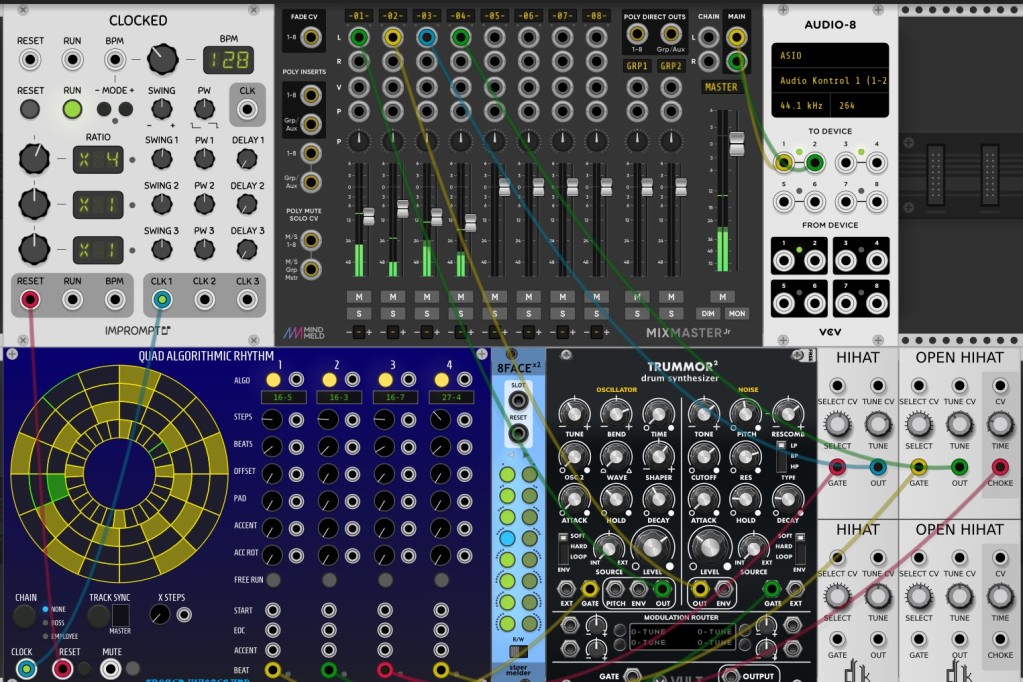
Download the patch [set AUDIO-8 to your appropriate audio driver]
The patch uses an Impromptu Clocked device as the timing source. It sends 16th-note clock triggers to the Quad Algorithmic Rhythm (QAR) sequencer module. The QAR triggers four different drum sounds (in Trummor2 and hat modules), which are combined in the MindMeld Mixmaster mixing module.
Basic rhythmic sequencer operation
The QAR sequencer has 4 channels of triggers. Each channel has a trigger output and a series of knobs controlling the trigger sequence. The most important are at the top, “STEPS’ and ‘BEATS.’ STEPS is how many time divisions are in the looping sequence. If STEPS is 16, it means that it will repeat every 16 clock triggers. BEATS controls how many triggers occur in the sequence. (See an explanation of gates and triggers below, if you’re a little hazy on their meaning.)

The default trigger selection algorithm (Euclidean) divides the triggers as evenly as possible in the sequencer steps. So STEPS 16 BEATS 4 means everyone’s favorite: 4 beats per 16 triggers, the basis of house and techno.
You can also use the OFFSET knob to modify where the beats occur. For example, for the classic “Clap on 2 & 4” rhythm, you’d use STEPS 16 BEATS 2, then turn OFFSET to 4, and you get clap on 2 & 4.
Drum sounds
For generating the drum sounds from the sequence, I use:
- Vult TRUMMOR2 drum synth. I use the two halves (Sine-based Kick and Noise) as separate sounds, though you can use the mix output and have a very complete kick drum model.
- SV Modular Closed and Open Hihat models.
This combination of modules is about as simple as you can make for a VCVRack drum machine. It’s basically Clock->QAR->Drum Synths->Mixer->Audio Out. The MindMeld Mixmaster+ mixer I’m using has an AUX expander that allows adding 4 aux send/return pairs for effects. There’s also an EQ sidecar module you can connect that gives you 4 band EQ for each channel.
Rhythmic algorithms
You could already easily keep busy with just these settings, but there’s more inside QAR. There are 5 different algorithms available for generating rhythm. They’re color-coded, and selected by the top row of buttons under each track (next to ALGO):
- Euclidean (distribute beats as evenly as possible) – Yellow
- Golomb Ruler (distributes beats as unevenly as possible) – Blue
- Well-Formed Rulers – Green
- Perfect Balanced Rhythms [see research paper] – Orange
- Boolean Logic – a track’s beats determined by logic operations on other tracks – Purple [tracks 3 + 4 only]
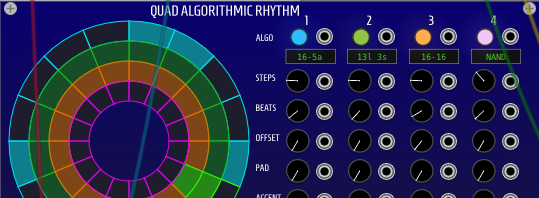
The first two are probably the most easily used ones. You can try the others, but Euclidean and Golomb Ruler are the most likely to keep people dancing. Simple patterns like 16-4 (which means 4 triggers in 16 steps) are straightforward, but you can get head-spinning results when you start using numbers other than 4. For example, 19-7 doesn’t align with the 4/4 grid, taking 4*19 steps to start the pattern on the 4/4 downbeat again.
Ed. note: so this looks very math-heavy. But what’s nice about these algorithms is that you can really intuitively select rhythms just by turning a knob. That reduces the brain-body-computer friction so what comes out relates to what you might hear. That’s also to say, you should definitely give this a try and experiment with the results.
More complex polyrhythms
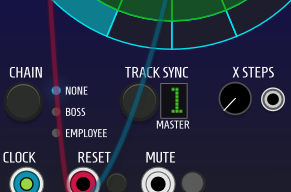
If you really want to go full wonky, try clicking the track sync button. It will display ‘1’, meaning that the first channel determines the duration of every other track. So if the first track is 16-4, and the second has 20-5, you have 4-against-5 rhythmic relationship between the two channels. The second track has 20 beats that take up the same time as the first track’s 16 beats. Set other channels 21-6 etc, and you get very stumble-y, off-kilter patterns. It can be difficult to find a recognizable groove when using this mode, but if you do it will sound jarringly original.

Save and recall patterns
And that brings us to saving QAR patterns, something you should do every time you find something cool. The QAR has no patch memory, but when the Stoermelder 8Face module [online manual] is placed next to the QAR, it can take snapshots of the module state. This lets you flip between patterns. If you find a pattern you like, hit the toggle at the bottom of the 8Face and click on one of the grey preset buttons.
It takes a while to dial in a decent groove going, so save it! It’s too easy to tweak your way to a stumbling mess.
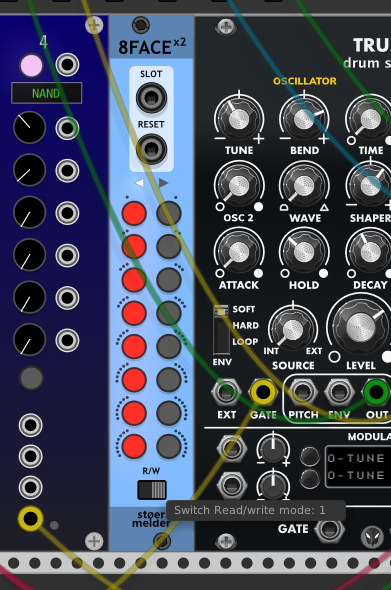
Going further with this patch
Just as a toy, there’s a pretty wide range of sounds possible without adding anything other modules. You can tweak the settings for sequencer channels in the QAR, and experiment with other algorithms and controls. You can also play with the controls on the drum modules to get sounds more to your liking.
It may sound silly to advertise this VCVRack patch as hours of fun, but it’s true. Even sticking to the tamer end of what the QAR does can generate compelling drum patterns. And the patch can be extended many different ways – add effects, add sequenced synth voices. This track I made is an example of exactly that.
http://cornwarning.com/chaircrusher/Chaircrusher-OnionRings.mp3
Reference: what are triggers and gates?
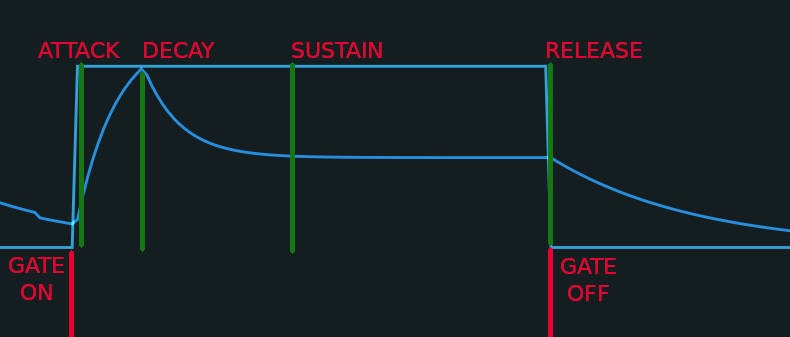
Gates and triggers do a similar thing in modular synthesis – they can trigger an envelope, start a sample playing, advance a sequencer one step, etc. But a trigger has a very short duration, and inputs that expect triggers just look for a zero to non-zero transition.
A gate signal has duration. An example of a gate is when you press a key on a MIDI keyboard.: As long as the key is pressed, the gate signal is ‘on’. This is relevant to envelopes, ADSR (Attack, Delay, Sustain, Release), for example. When the 0 to non-zero transition is detected it starts the Attack phase of the envelope. While the Gate is high, the envelope rises to its peak level during the attack phase and then Decays to the Sustain level. When the Gate goes to zero again, it triggers the Release phase.
What happens if the Gate signal is shorter than the Attack & Decay phases of the envelope? That depends on the envelope, but the most common behavior is that when the gate goes to zero, the envelope starts the release phase from whatever level it is at.
Have fun, everyone! For more ideas like this, a great companion article from earlier this month:
Kent Williams codes, produces music, and watches a lot of British crime dramas in his Iowa home while the world devolves into chaos. Visit Kent’s site:
And Bandcamp site:
https://chaircrusher.bandcamp.com/